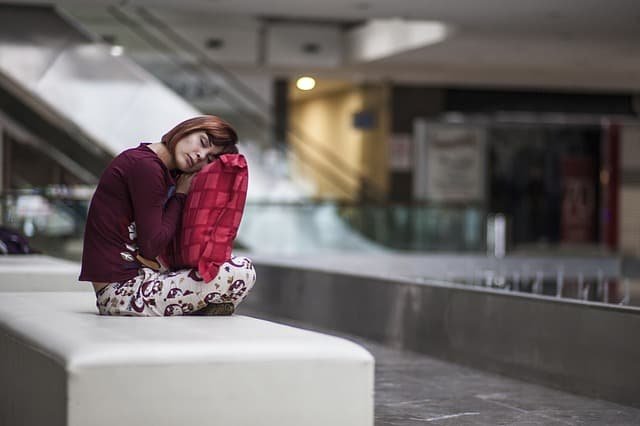
Let’s say it right away: that of sleepwalkers who, during sleep, would limit themselves to walking, is just a platitude. In fact, during this nocturnal “automatic activity”, there are also those who speak, have sex, paint and even… kill.
According to statistics, between 2 and 3% of the adult population would suffer from it. Fortunately, the episodes of sleepwalking, which medicine places in the vast category of sleep disorders (or parasomnias), do not occur every night but, approximately, once or twice a month. And that’s good news, because while it’s true that most sleepwalkers just wander around the house, some of them engage in decidedly unexpected behaviors while they sleep.
What are the causes of sleepwalking?
Many authors in the field of sleep psychopathology have been interested in studying and therefore in circumscribing and validating sleep and sleepwalking specifically.
To begin with, it must be emphasized that sleep is a precious activity for the individual and that it allows him to rest and regain the energy he needs to carry out his daily activities. Sleepwalking in particular is one of the most critical and dangerous activities that can occur in the individual during sleep. In fact, during this event, the so-called sleepwalkers find themselves doing things that they generally do in daily life.
The exact cause of sleepwalking is unknown, but it appears to be hereditary in nature. In fact, there is a greater probability of having episodes of sleepwalking if in the family of origin there are already people with this disorder or with night fears.
Causes that can trigger sleepwalking, or make it worse, are:
- stress and anxiety
- infections with fever (especially in children)
- excessive alcohol consumption
- narcotic substances
- some medications, such as sedatives
- being abruptly awakened by a noise while in deep sleep
Other sleep disorders such as obstructive sleep apnea or restless legs syndrome can cause sleepwalking episodes.
Some useful habits to counter sleepwalking
There is no specific cure for sleepwalking but it usually helps to sleep for an adequate amount of time and to maintain regular, relaxing habits (routines) before going to sleep such as:
- go to bed at the same time every night whenever possible
- make sure the bedroom is dark and quiet
- limit drinks, especially those containing caffeine
- going to the bathroom (emptying the bladder) before bedtime, to avoid having to get up at night
- find ways to relax, such as taking a warm bath, reading, or breathing deeply
If the disorder affects a child and the episodes of sleepwalking generally occur at the same time of the night, you can try to keep them awake for about 15-30 minutes before the time when sleepwalking normally occurs, so as to prevent them from appearing to change the sleep cycle.
Advice for safety and prevention
To prevent sleepwalking it is necessary to act on the causes that favor its appearance. Getting enough sleep and strategies to treat and reduce stress are helpful. In addition, it is important to keep areas of the house where sleepwalkers usually walk free of obstacles to prevent them from getting hurt. It is also good to make sure that doors and windows are closed.
If a child is a sleepwalker, you should avoid making him sleep in the upper part of a bunk bed, make sure that there is a well-closed gate at the top of any stairs and instruct any people who have the task of supervising him at night (such as, e.g. the babysitter, relatives or friends) about what to do in case an episode occurs.
The main thing in the presence of a person with an episode is to ensure his safety. Therefore, it will be necessary to bring her back to bed gently, reassuring her. If she is not awakened, she will often go to bed and sleep again. Sometimes, gently waking her up and walking her to bed only after she has fully recovered from the sleepwalking episode can prevent recurrence of the episodes. It is important not to yell or yank the sleepwalking person and not to try to physically contain them unless they are in immediate danger, as they may fidget.
